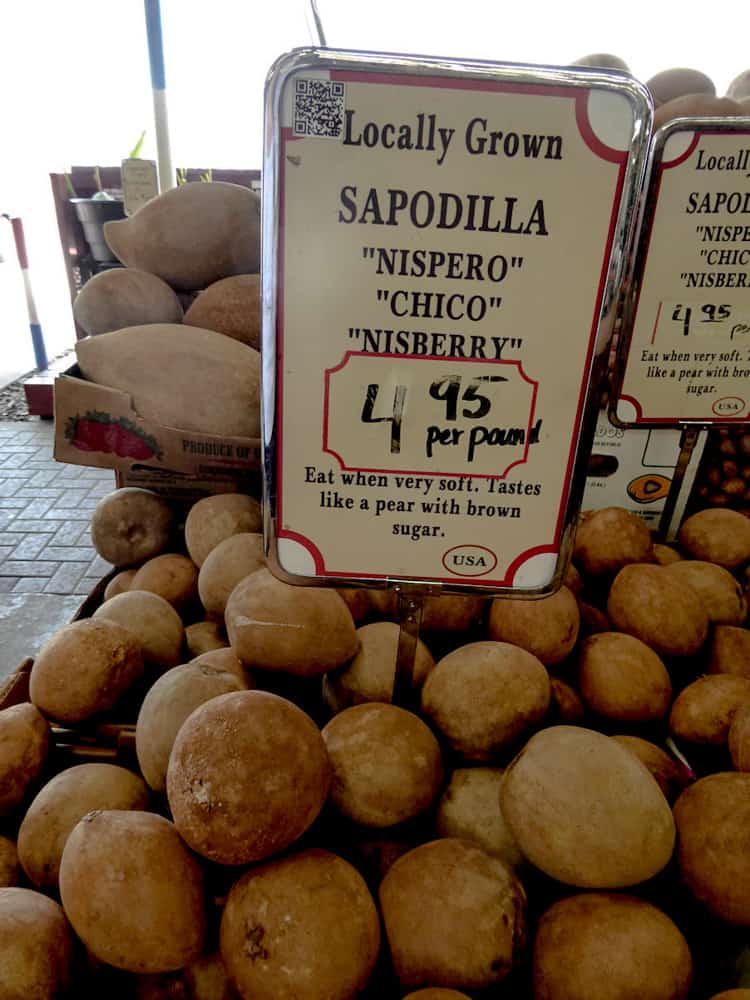There are so many delicious Filipino fruits that are exported abroad, but there is nothing like eating them where they grew.
If you’re visiting a country with 7,107 islands, you know you’re in for a treat.
After university I moved to Cebu for an international internship and coming from small town Canada one of the things I noticed was how there were so many incredible fresh fruits in the Philippines.
Exotic Fruits
This tropical paradise is also home to some of the best fruits you’ll ever taste in your life and here are 23 of my favorite:
23 Delicious Filipino Fruits
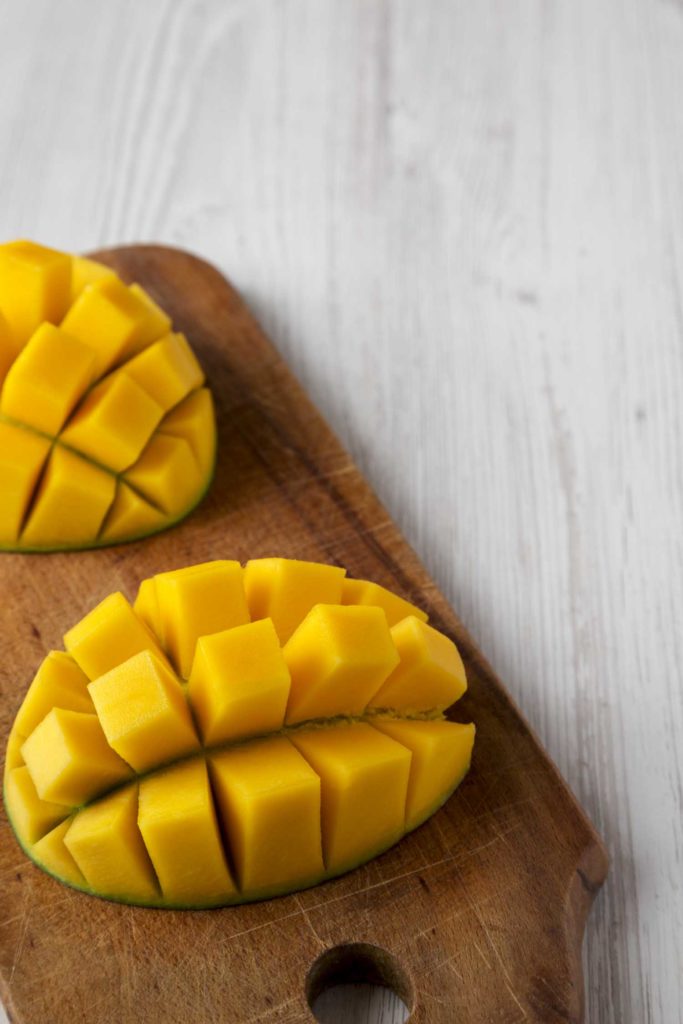
Philippine Mangoes
The mango is the national fruit of the Phillipines and one of the most common foods in Cebu whether it be fresh or dried and exported around the world.
The Philippine mango or “mangga” is grown in many parts of the country and comes in different varieties including the Manila mango, honey mango and carabao mango.
And there are so many ways to eat mango in the Philippines. Filipinos especially love to eat unripe carabao mango dipped in rock salt or shrimp paste.
It is a season that is truly celebrated, peak mango season is between March and June.
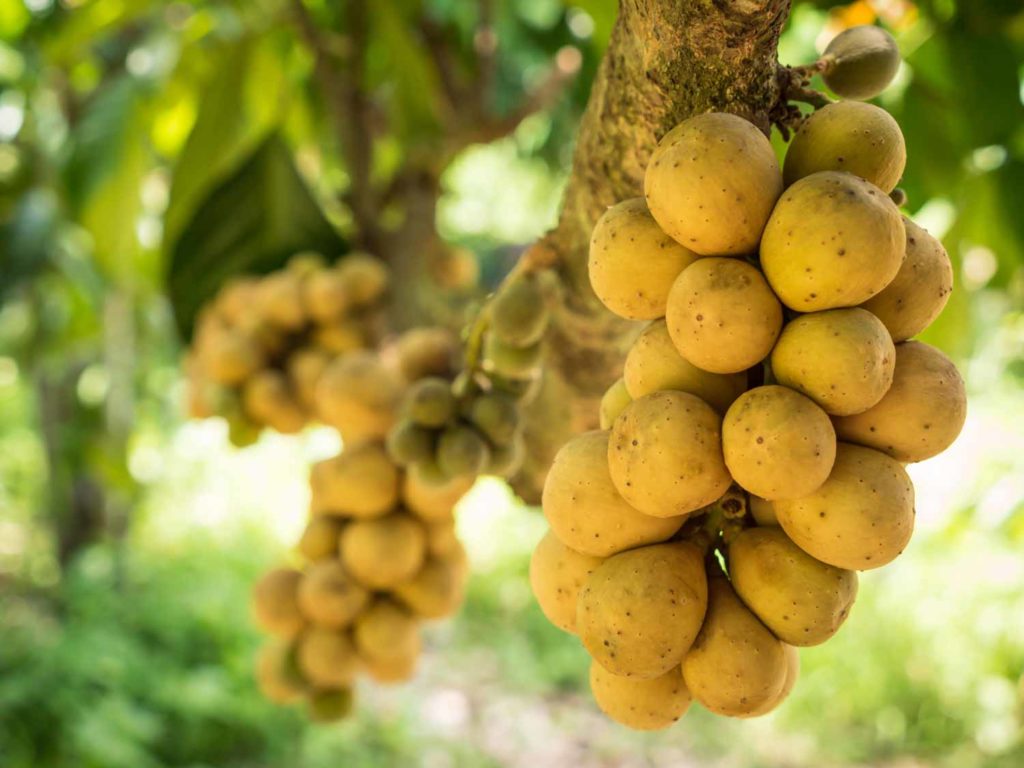
Lanzones
Native to Southeast Asia, lanzones has its own festival in the province of Camiguin.
They are called longkong or langsat elsewhere, and known as dokong Malaysia fruit and duku in Indonesia.
Although they look like yellow grapes, lanzones are actually a sweet and sometimes sour fruit.
It is very similar to a grapefruit and is rich in vitamin A and other nutrients.
According to some Filipino friends, the best way to tell if the lanzones is sweet is if the tree has black ants in it.
This exotic fruit is in season from August to December.
Dungon
The dungon fruit is native to the Philippines and plays a key role in Dumaguete’s traditional food binakhaw, a kinilaw-style delicacy.
This fruit grows on the Heritiera littoralis tree, often found in the mangrove forests along the coastal regions of Negros Island and other parts of the Visayas and Mindanao.
Dungon fruit is distinctive with its tough, oval-shaped brown shell and fibrous, earthy interior. Its unique flavor brings a slightly bitter, astringent aspect to dishes.
Locals highly value dungon for its cultural significance and its use in traditional recipes across the Visayas.
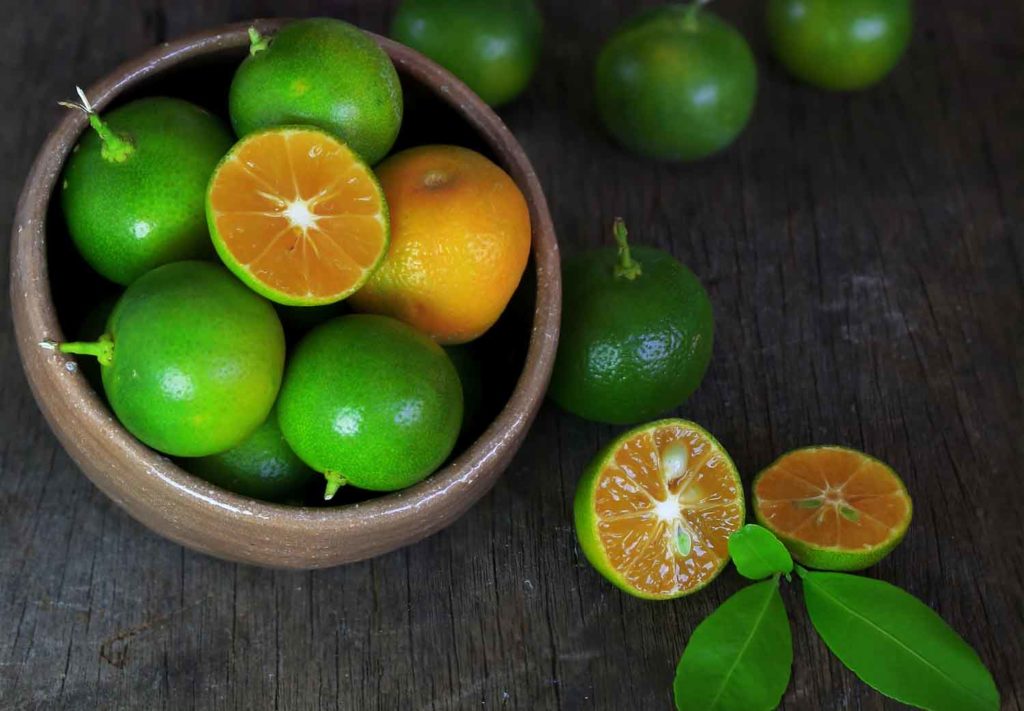
Calamansi
This tropical fruit is not eaten as a snack, but it is a staple in many Filipino sauces, dishes such as kinilaw and as a calamansi tea.
Also called the Philippine lemon, this tiny green fruit has a sour juice that resembles a lemon, making it a great addition for seasoning meats and as a condiment.
It is so closely tied to the Philippines, that in other countries it is often called Philippine lime. It was once called calamondin, during the US colonization.
It’s become popular in other countries and one of the fruits in Vietnam used in drinks and cooking as well.
If you don’t live in the Philippines, you can order calamansi juice inexpensively.
It adds a really complex sour flavour to dishes that some substitute with a mix of orange and lime but it’s not quite the same.
Calamansi season happens from August to October.
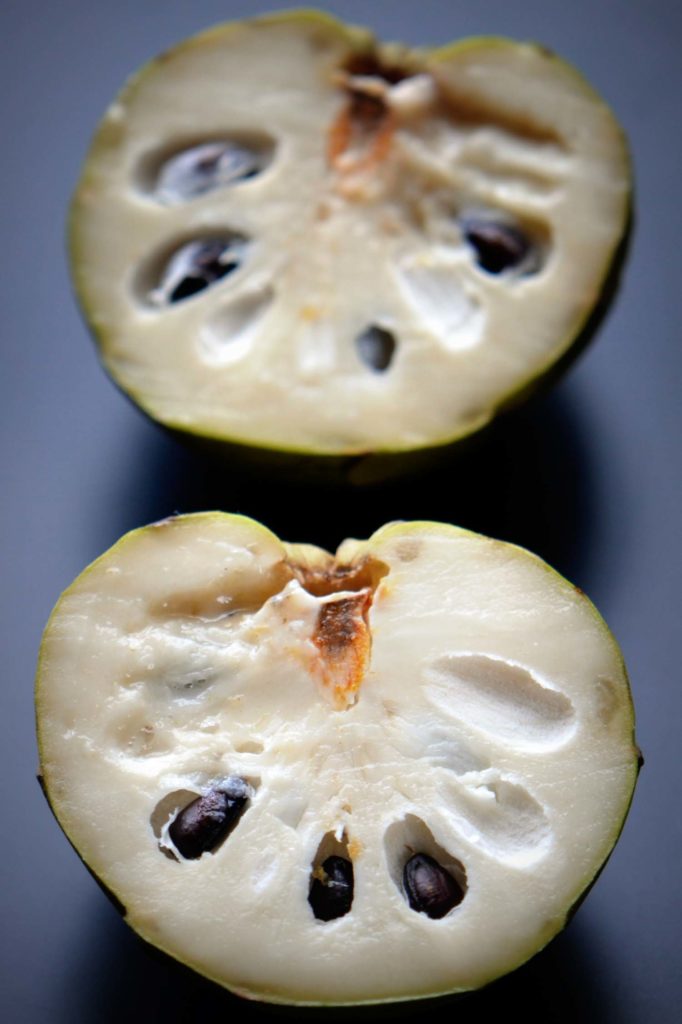
Atis
Also known as custard apple or cherimoya, atis found all over the world and available from September to December in the Philippines.
This unusual fruit resembles a rough apple with a creamy white flesh that tastes like custard.
But don’t eat the skin because it is toxic.
Some people also make smoothies and shakes out of atis.
And while it takes a bit of effort to separate the seeds from the flesh, it’s worth it to avoid getting that bitter taste.
You can find atis all over South East Asia and it’s a common Thai fruit, Laos fruit, along with other countries.
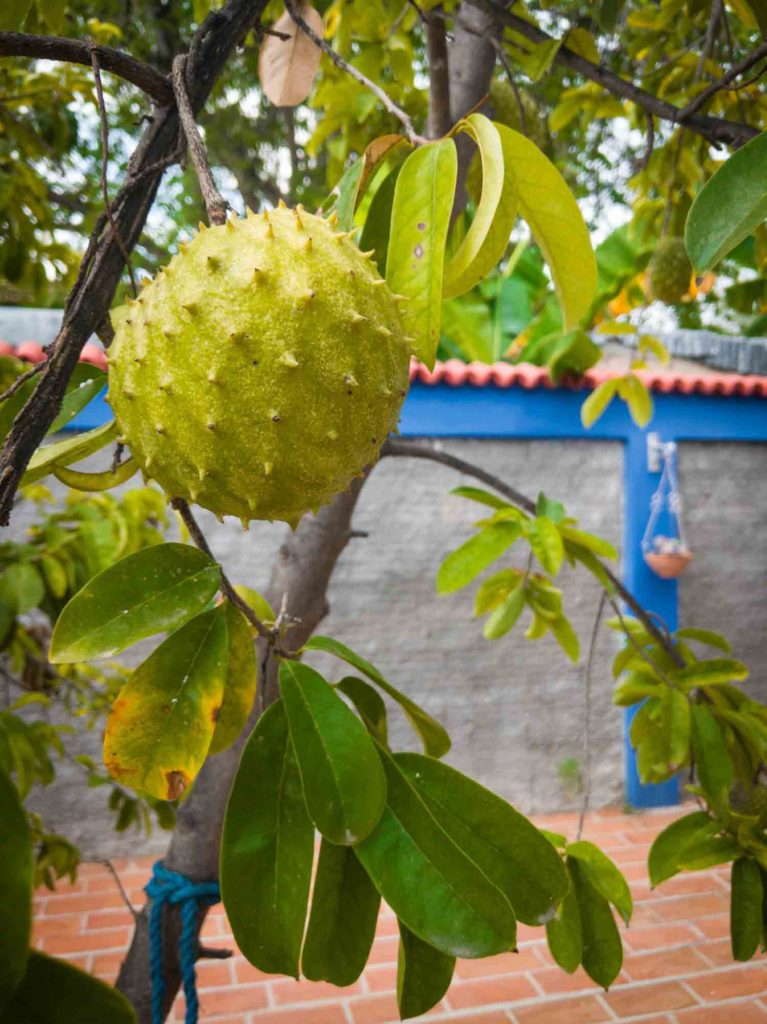
Guyabano
The Philippines has no shortage of unusual fruits that actually taste delicious.
Another favorite is the guyabano or soursop, a tropical fruit that contains a white flesh with a sour and almost custard-like flavor.
Guyabanos are available from August to November.
It smells like pineapple but tastes like apple and strawberries, which makes it perfect for smoothies or shakes.
Some even make ice cream out of them because of their sweetness.
They are very popular for their healing properties, and is very popular as a Costa Rican fruit for this reason.
In many countries some people take guyabano supplements.
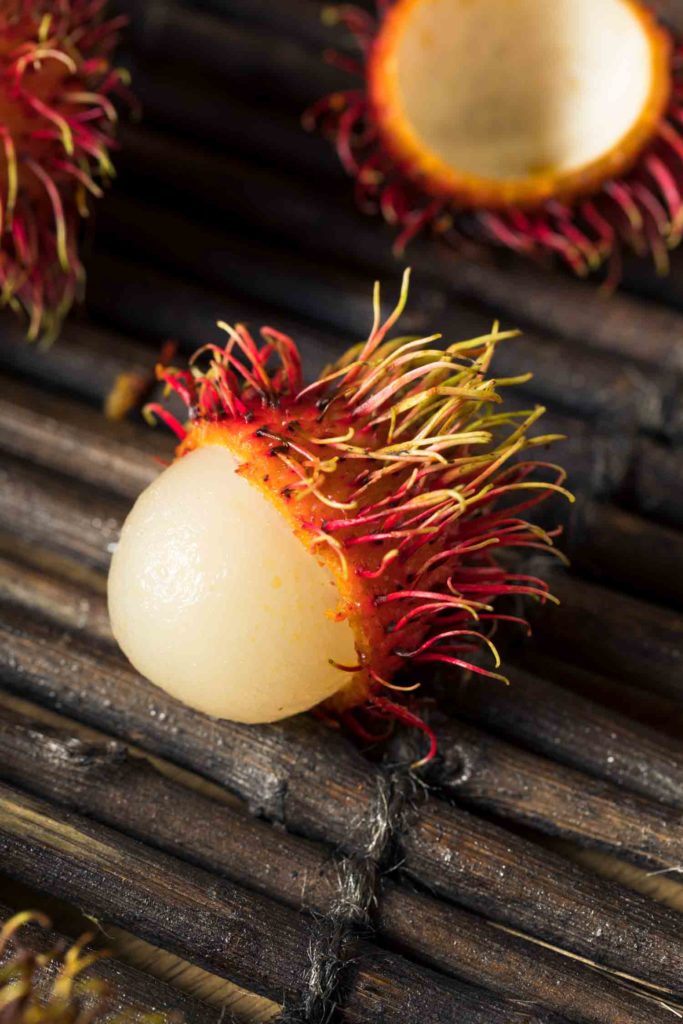
Rambutan
It may look like a virus, but the exotic fruit rambutan is anything but deadly. It’s a popular tropical fruit in the Philippines, it also grows in Latin America and is one of the most popular Bali fruits.
One of my personal favorites, opening this weird-looking fruit will surprise you with a lychee looking flesh that you can suck on.
Just don’t try to bite through as there is a pit inside.
Rambutan season in the Philippines happens between August and October where you’ll see a lot of these red hedgehog-like fruits in local markets.
Be aware that they do not continue to ripen once picked. So make sure to choose the vibrant red fruits for the sweetest taste.
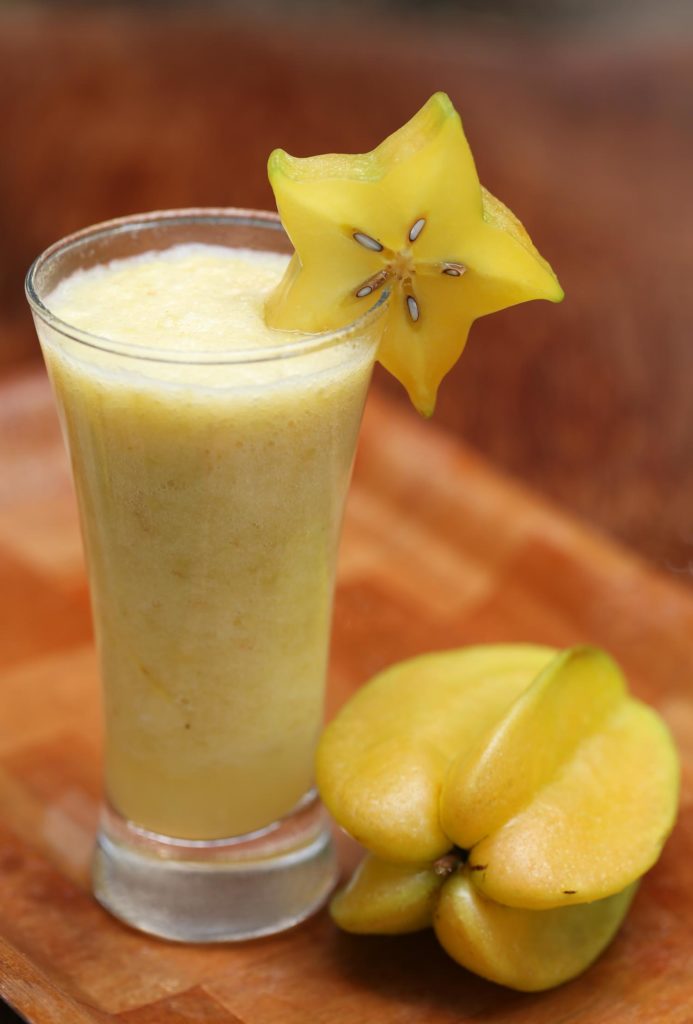
Balimbing
Also called star fruit because of its shape, balimbing has an almost similar taste to an unripe mango, although it’s a little more tart like an apple.
The fruit is so popular that there’s a Filipino expression called “balimbing” that means two-faced.
It’s also known as carambola in Latin American countries.
Balimbing can be harvested all-year round but it peaks fruiting between May and August.
Often you’ll find it sliced on fruit boards or in drinks with a lot of sweetener because it is a bit tart. The skin is waxy so many people do not eat it.
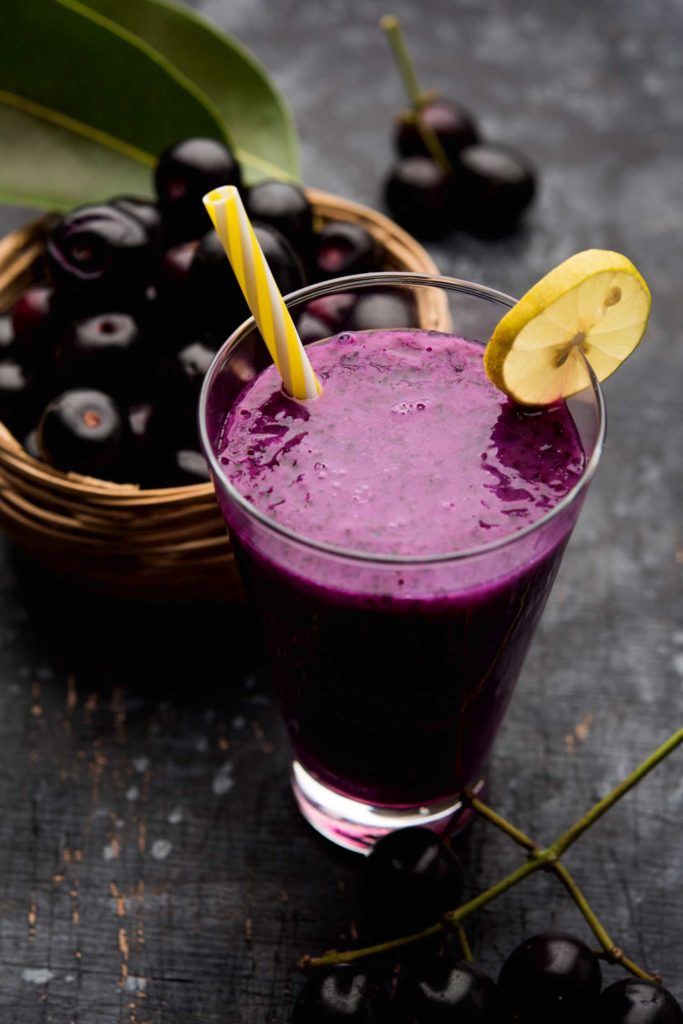
Duhat
Also known as java plum or jamun, duhat is a tropical fruit that looks like berry but it tastes sweet yet leaves a puckering sensation in the mouth.
Available from January to February and October to December, a lot of Filipinos enjoy duhat not only for its unique taste but also because some believe it helps with diarrhea.
It’s a great source of vitamin C and iron. Many believe it helps with everything from diabetes to digestion and it’s often used in holistic medicine.
Out of season it’s easy to buy Java plum juice or java plum fruit powder.
Duhat is also made into red wine in some parts of the country and some locals use the juice from its unripe fruit into vinegar.
Chico
Chico is not your ordinary exotic fruit because it looks boring on the inside but its flesh resembles a peach with its sweet and malty flavor profile.
Filipinos know chico as the energy fruit rich in Vitamins A and B. It is known as sapodilla in Latin America and is one of the most common fruits in Nicaragua.
Its bark is used for chicle which was the original chewing gum.
Chico is in season in the Philippines in January and February.
You can also buy it freeze dried or as a fruit powder.
Aside from being eaten raw, chico is also made into ice cream or as a topping to sherbets because of its sweet taste.
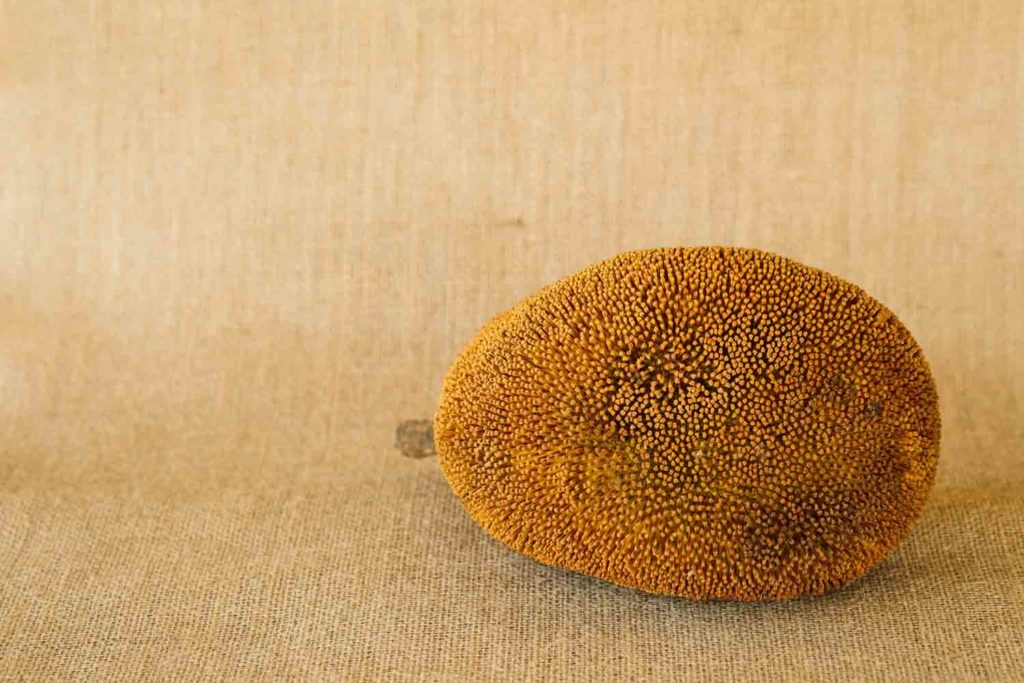
Marang
It may be one of the weirdest fruits you’ll ever touch, but taste its sweet flesh could just become your favourite Filipino fruit.
Marang is native to Mindanao where it is grown in a lot of backyards and farms.
It is related to the jackfruit and the cousin of the breadfruit, also known as ulu in Hawaii.
The fruit itself looks like a 12 inch oblong sponge, but opening it reveals seeds wrapped in flesh that’s sweet and is so tasty to eat.
It is full of vitamins and minerals and considered to have anti-inflammatory and anti-viral properties, helping with a number of issues including cancer.
Marang is only available from September to October and aside from eating its flesh, some Filipinos also clean the seeds and stir-fry them to enjoy as a snack.
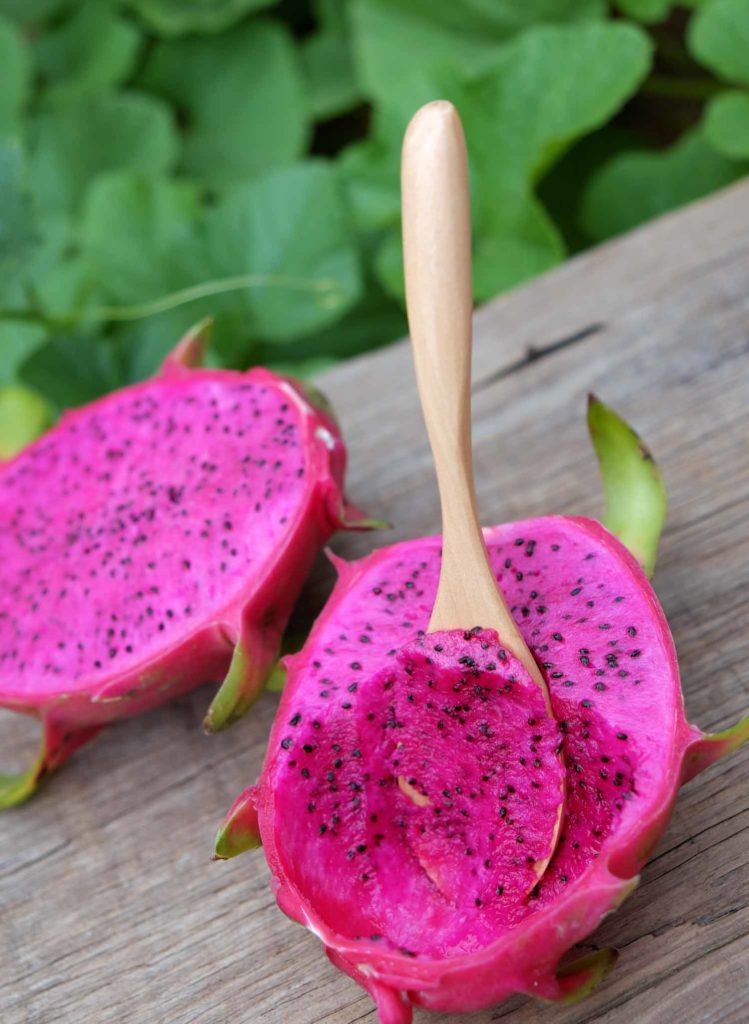
Dragon Fruit
Dragon fruit is that pink unusual fruit that you see in almost every Chinese celebration in the Philippines
But more than being part of tradition, dragon fruit is a significant part of Filipino culture because of its unique taste.
It is known as pitahaya fruit in Peru and some other countries. But Dragon fruit is grown around the Philippines and harvest season happens from July to October.
Aside from being served fresh, dragon fruit is also used for cooking, smoothies and desserts because of its sweet taste and rich nutrients.
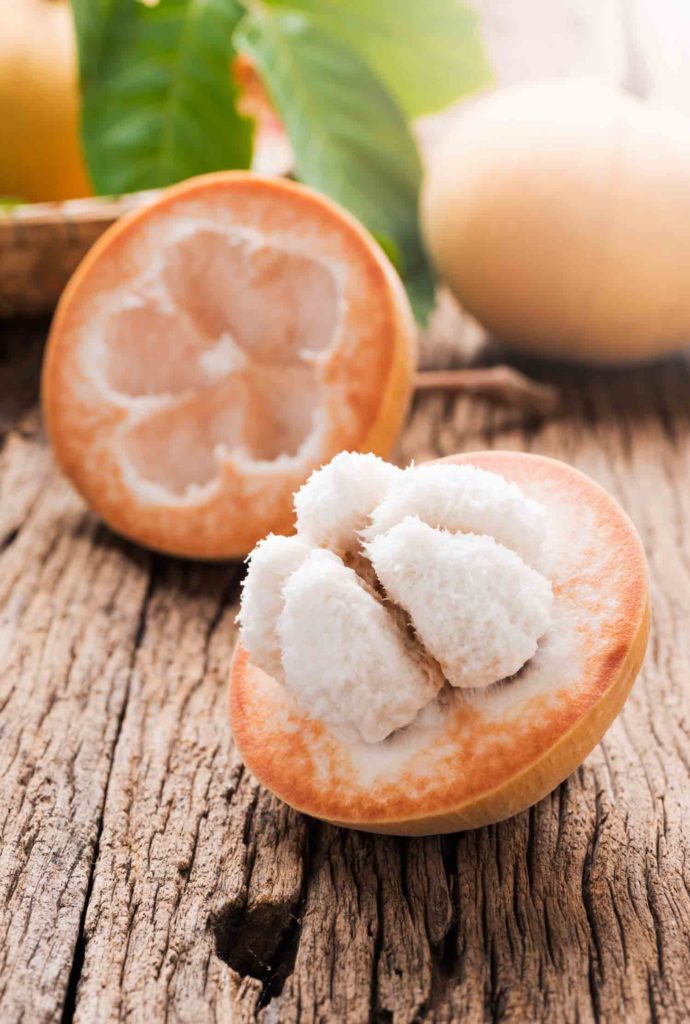
Santol
It may not look appetizing at first sight, but santol is a Filipino favorite because of its sweet taste and apple-like texture.
It is also known as cotton fruit, wild mango steen, lolly fruit and Sayai. It’s a another exotic Filipino fruit that is both sweet and sour.
Santol is grown in a lot of gardens and backyards where many Filipinos have fond childhood memories eating santol while playing with friends.
It is rich in vitamin B and C along with many antioxidants. Many believe the benefits of santol range from easing allergies to cancer healing properties.
Santol season runs from July to October where you can enjoy santol fresh, as a jam or as part of a dish like the famous “sinigang.”
You can also order freeze dried santol.
Calabash
Calabash turns heads because its tree is small but its fruits are huge resembling a small green watermelon.
You can find it around the world as jicaro in Mexico, mate is one of the most unusual Ecuador fruits, totumo in Colombia and pate in Peru.
But to most Filipinos, calabash is a favorite for snacking, where many say it tastes like buko juice. But it is also widely cooked in many Filipino recipes.
In Argentina they use the dried fruit skin to make mate gourds for yerba tea. And sometimes you’ll see them in Mexico as part of maracas.
It is believed calabash originated in the Caribbean and Central America but were introduced to Africa, India and South East Asia.
It is sometimes called the miracle fruit for its healing properties.
Many believe it could prevent cancer cells from growing and there are current studies to determine if this is true,
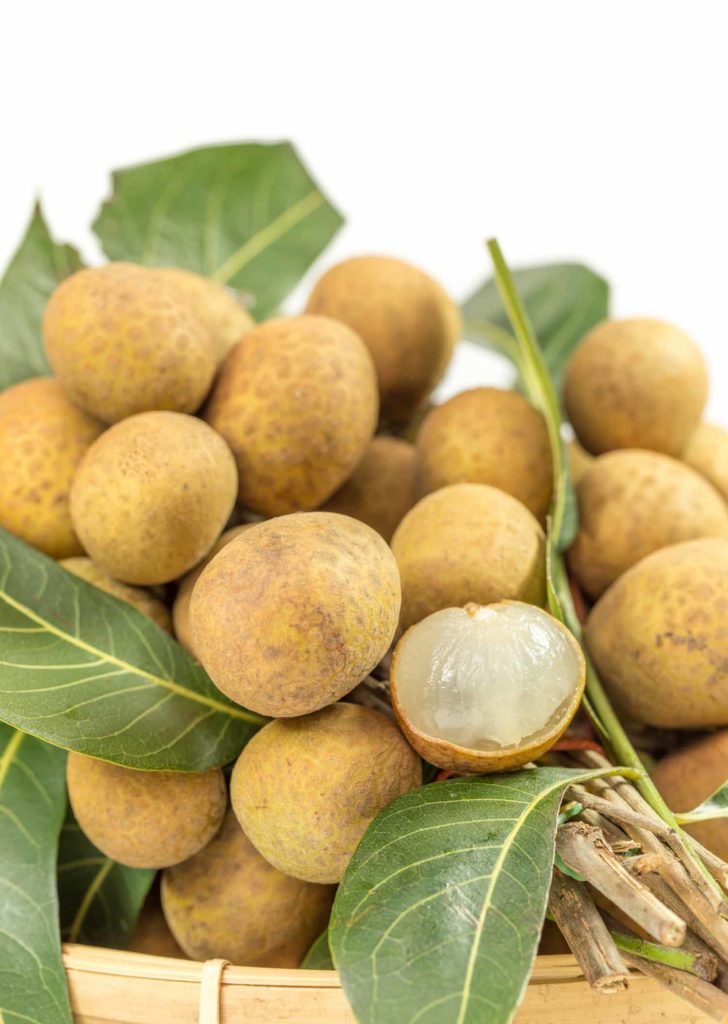
Longan
A part of the lychee family, longan is a traditional Asian fruit that’s popular in the Philippines.
Resembling the exotic fruit lanzones, longan has a soft flesh that tastes sweet and tart.
Although available all-year round, the longan tree takes at least 3 years to bear fruit making it a more expensive fruit in the Philippines.
You can eat longan raw but it is also used in desserts and soups.
Sun dried longan fruit are also very popular snacks.
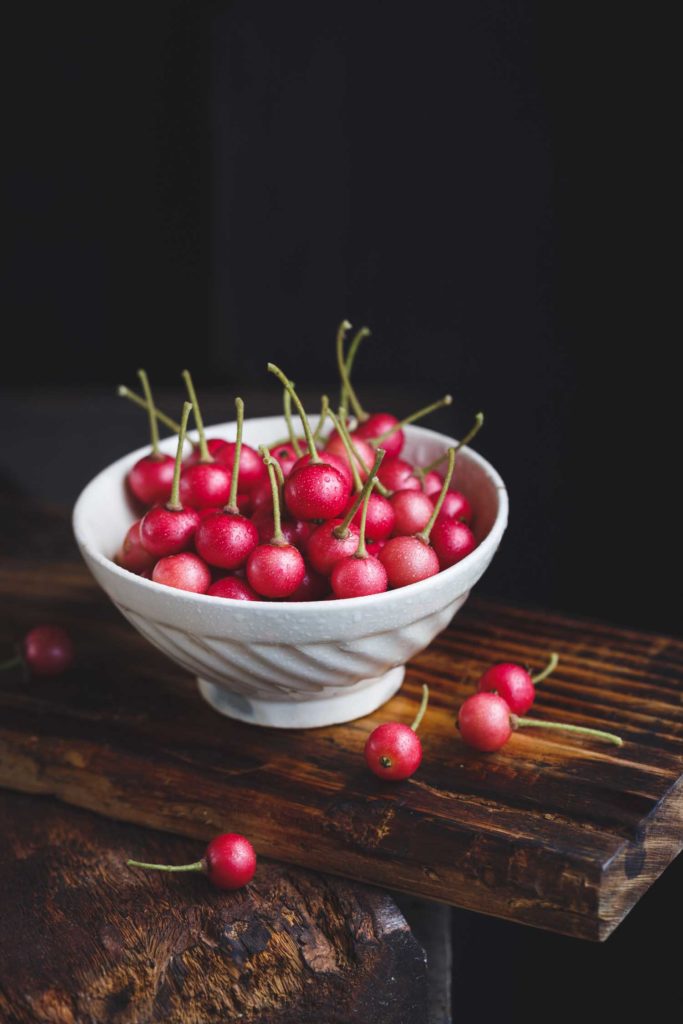
Aratiles
Another tropical fruit that reminds Filipinos of their childhood is aratiles.
This sweet and juicy fruit looks like American cranberries and it is grown in a lot of people’s backyards where kids can easily pick them to eat immediately.
It’s another one of the Filipino fruits you can find in Central America and the Caribbean. It is also known as Jamaican cherry or Panama berry.
And because there are so many islands in the Philippines and languages, sometimes it is called datiles, sarisa, kerson or manzanitas – depending where you are!
The aratiles tree bears the most fruit during the summer months and it takes a break during the cooler months.
Of course, you can’t leave the country without sampling one of its most unusual fruits—the miracle fruit.
Filipinos call it the miracle fruit because of its healing properties including cancer.
Turn sour food sweet by inhibiting your taste receptors. Truly transform foods you never thought could be so sweet and delicious.
Even if you can’t go to the Philippines you can buy miracle fruit tablets,
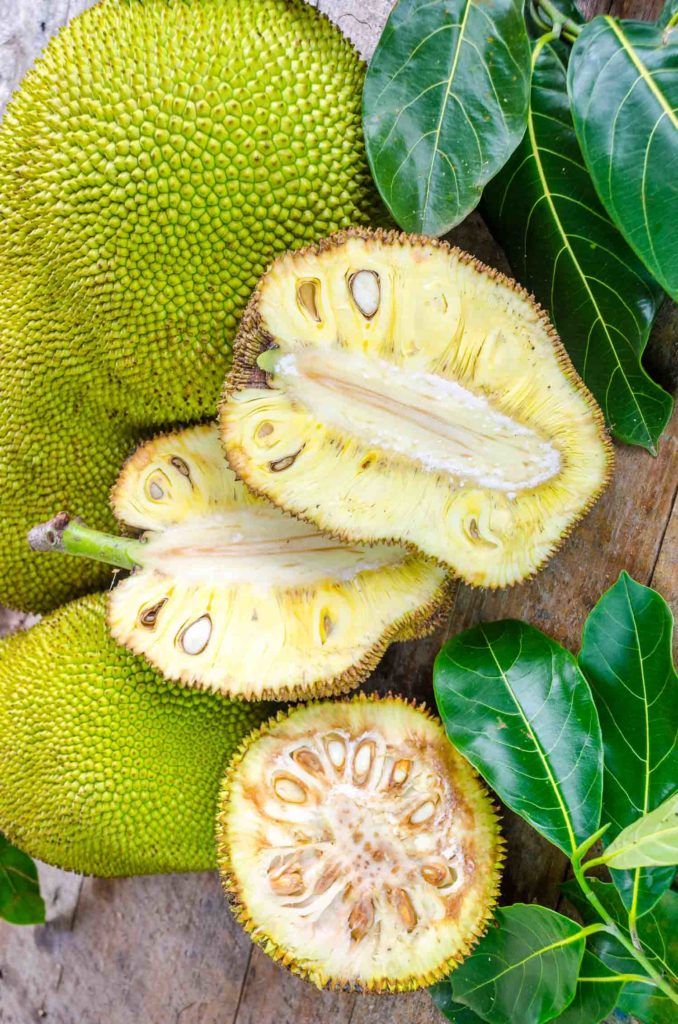
Langka
Also known as jackfruit, langka is a huge fruit with a thick, spiky shell. But its flesh is very sweet when ripe and tart when it’s unripe.
Langka season is from March to May and aside from being eaten raw. Its ripe flesh is also made into jams and preserves.
While its unripe flesh is added in different Filipino dishes. It’s also one of the best fruits in Cambodia.
Canned jackfruit is becoming very popular for vegan cooking as it often resembles the texture of pulled pork.
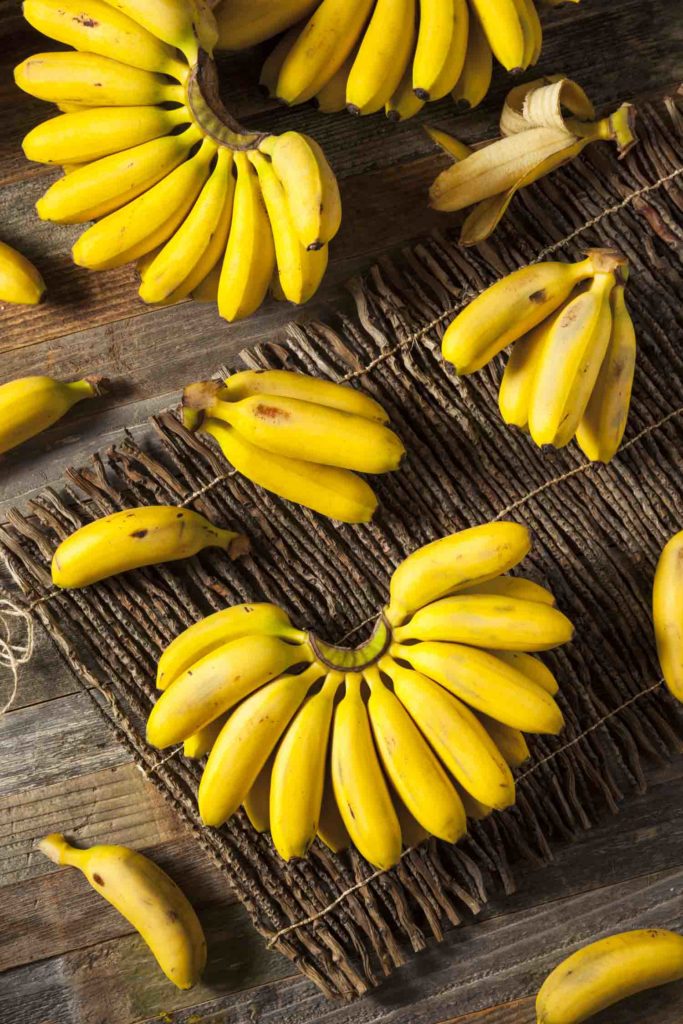
Bananas
You have not really had a banana until you’ve had one fresh off the tree.
You’ll see bananas served in almost every Filipino dining table because they’re very delicious and are available all-year round.
Philippine bananas can be served in different preparations.
Banana cue is a popular Filipino snack where two pieces of bananas fried in oil and sugar are skewered together.
I ate so many of these while living in Cebu, they are starchy, sticky, sweet and oh so delicious. Bananas on a stick are a great idea as I also love chocobananos.
The thicker plantains are used for meat dishes and soups.
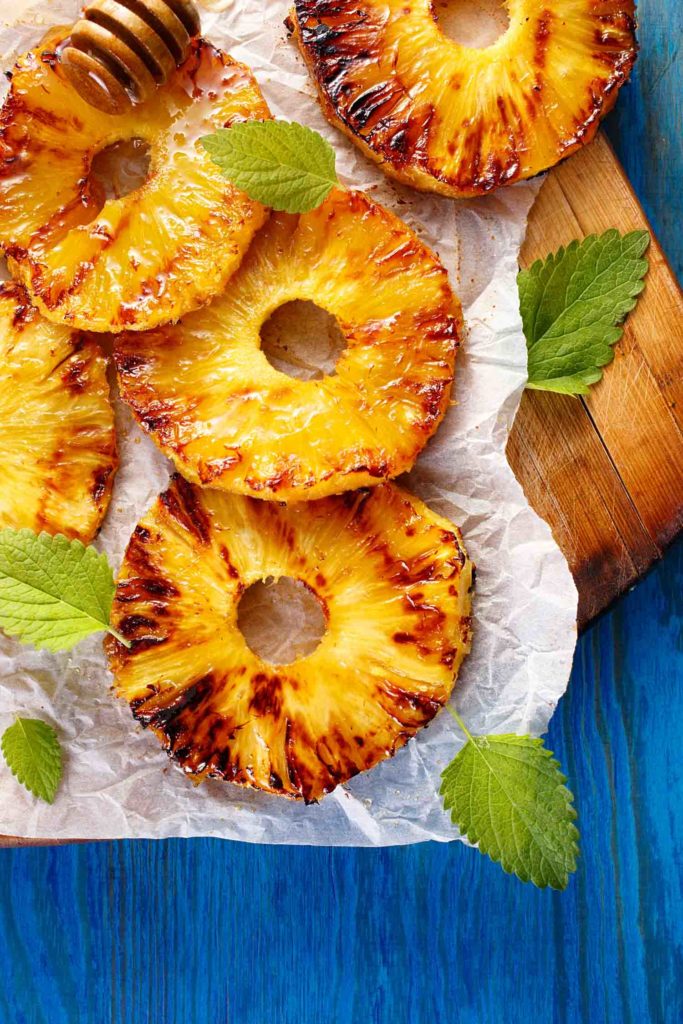
Pineapple
A lot of pineapples that you see in America and other countries are exported from the Philippines.
And yes, those canned pineapple slices from Del Monte in your supermarket come from the country too.
Pineapples are a staple street food snack where you’ll see stalls selling peeled and sliced pineapples.
This is very common from May to July when they are in season.
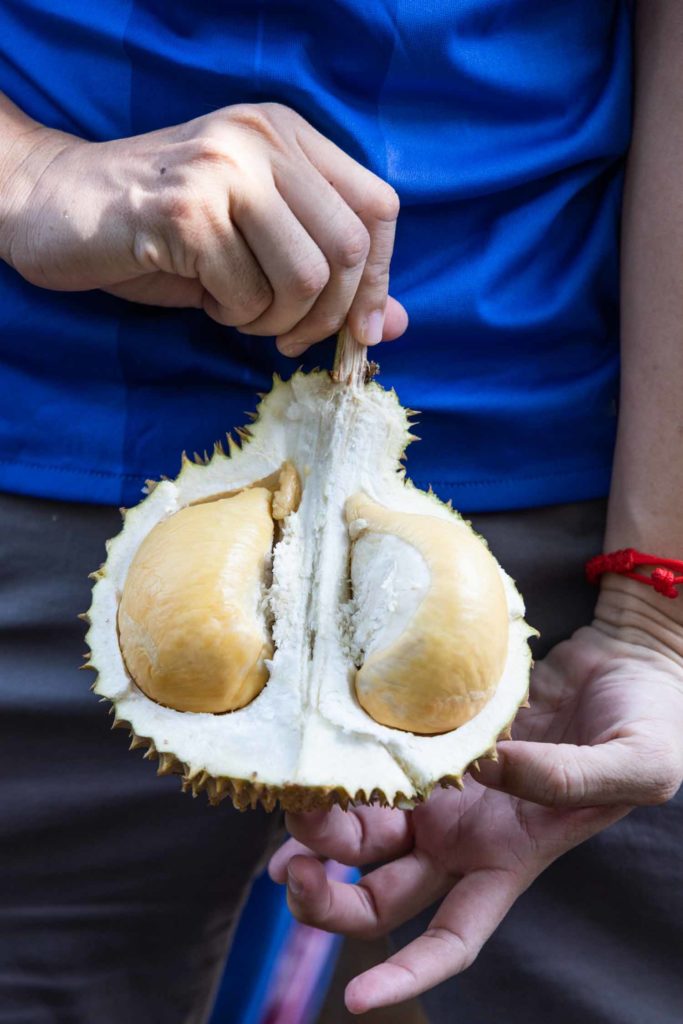
Durian
Durian is one of the Philippines’ most popular exotic delicacies because of its pungent odor.
When I was in the Philippines I noticed many signs that said you could not bring durian into a building.
Grown mostly in Davao region, durian has a hard, spiked shell.
But opening it will reveal a soft flesh that tastes creamy and sweet. It tastes a bit like blue cheese with a bit of sweetness.
Durian is so popular in the Philippines that it is used in different preparations including candies, jams and tarts.
It is common to buy durian paste for desserts.
Durian harvest season is from August to November. If you’re visiting Davao City in August, you can eat a durian buffet for a cheap price.
It is also a very popular snack, you can buy durian candy, durian chips and freeze dried durian.
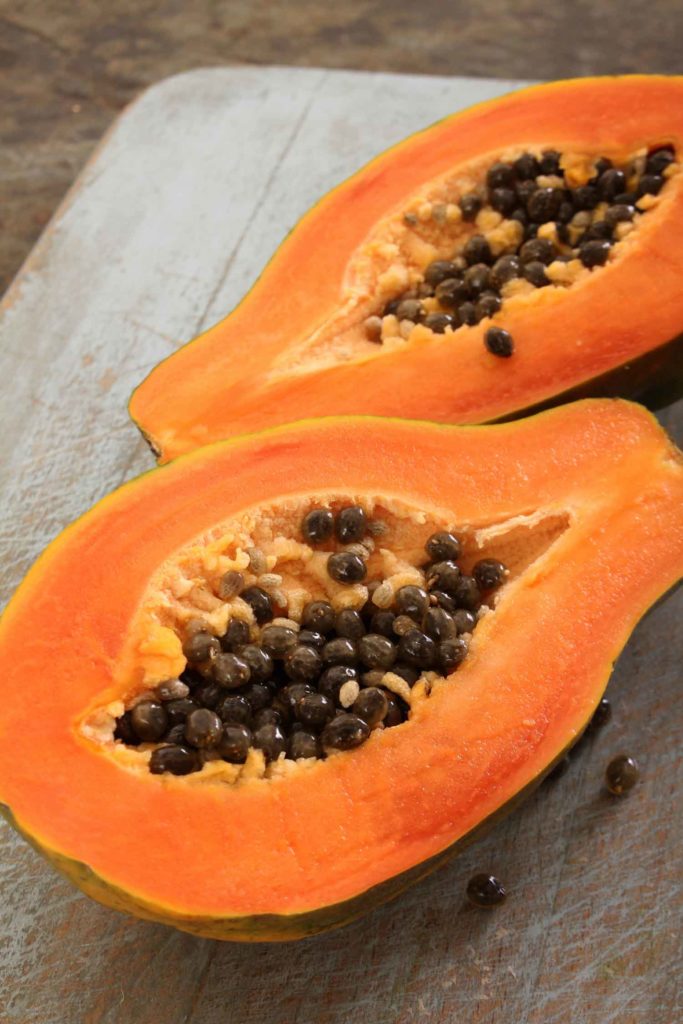
Papaya
Nothing says tropical fruit more than the humble papaya.
Personally it is one exotic fruit that I do not like. I don’t like the texture nor the taste, but to each their own!
This exotic fruit is grown in a lot of Filipino backyards. It bears fruit all-year round making it a staple for desserts and snacks.
A Filipino pickled salad called “atsara” also uses shredded unripe papaya, which is a popular condiment in the country.
It is also an important ingredient for “tinola” or chicken stew.
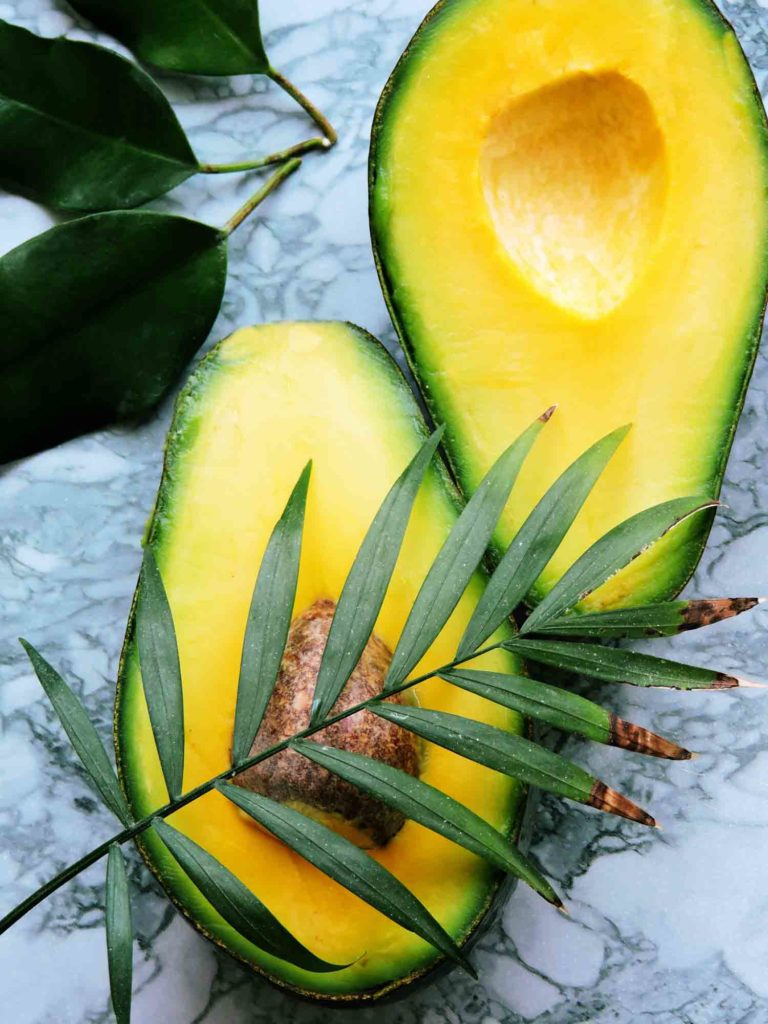
Avocado
Although it’s often thought of a Mexican fruit, avocado is grown around the world.
Avocado is a hot commodity in the States because of its amazing health benefits…and people are obsessed with avocado toast.
That also makes this fruit very expensive.
But in the Philippines, avocado is nothing but a staple fruit for snacks. Its ripe flesh can be eaten raw or with powdered sugar or milk.
Some also make avocado into smoothies or as part of a salad.
Avocado season in the country runs from May to September.
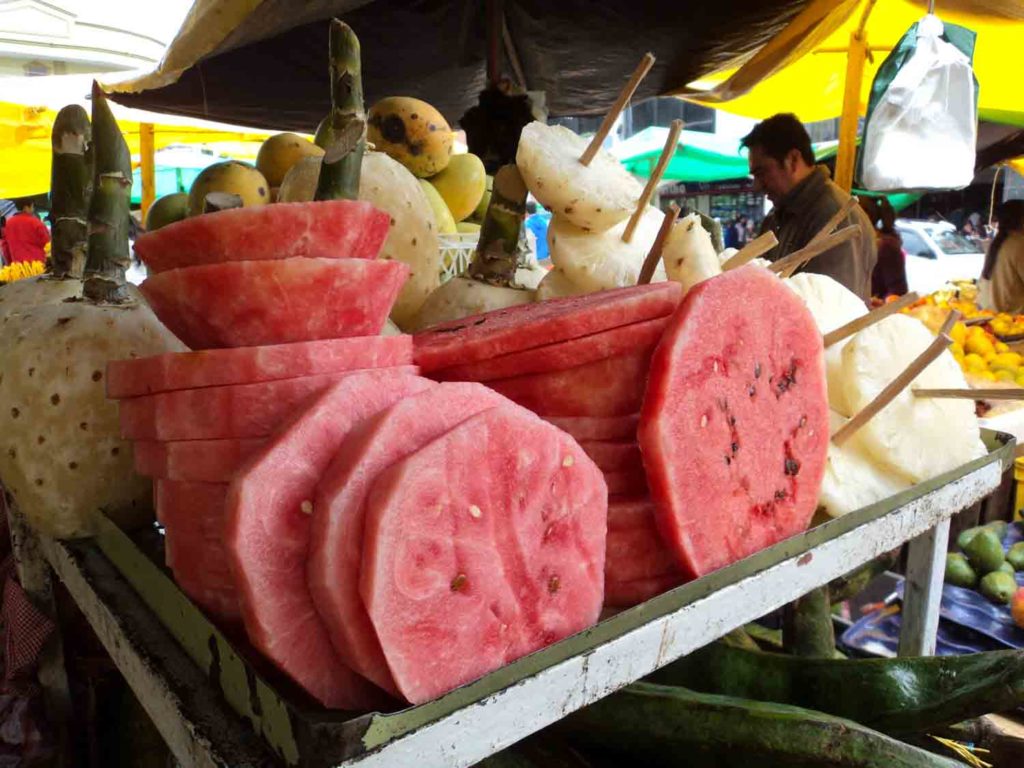
Watermelon
Known as the ultimate summer fruit, of course, you can expect to find a lot of watermelons in an island country like the Philippines.
Red watermelons are especially a favorite among Filipinos. You can easily see street vendors selling them sliced and ready to eat.
Watermelon is available all-year round and it can be used for shakes, salads, desserts and even some Filipino dishes.
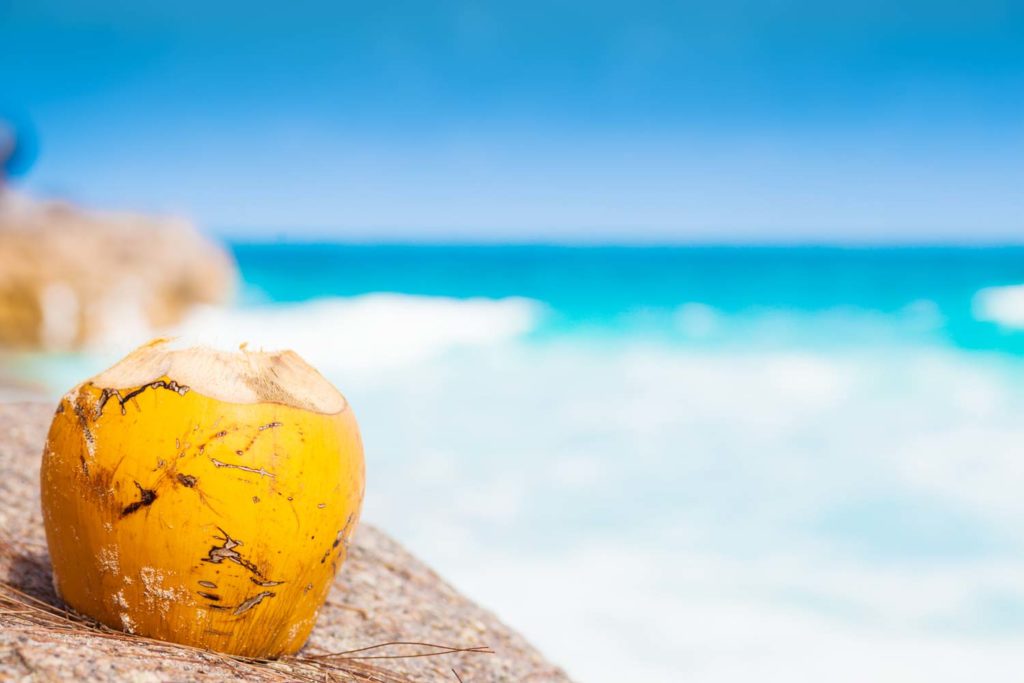
Coconut
You can’t be in a tropical country and not enjoy coconut.
Known as one of the most versatile fruits in the world, Filipinos love coconut in a wide variety of preparations.
Available all-year round, coconut is not only eaten raw and its juice enjoyed directly from the fruit.
And it is also added in fruit salads, desserts, ice creams, jams and preserves. It is also common cooked as part of many Filipino dishes.
Coconut cream is also used in a lot of delicacies around the Philippines.
Are you ready to sample these Filipino fruits while travelling to the Philippines?
Pin it: Fruits in the Philippines


